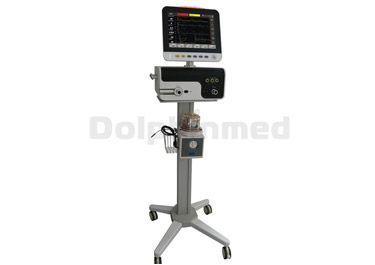Application necessity of Infant ICU Ventilator
As a Hospital Ventilator Machine Exporter, there is some information about the ventilator to share with you. Newborns can have severe asphyxia for a variety of reasons, and immediate care can be obtained in hospitals with relatively good medical conditions. However, if it is in a basic hospital with imperfect medical conditions, this situation often requires hospitalization.

Infant ICU Ventilator
There is a well-established system for neonatal transfusion in general hospitals and the application of Infant ICU Ventilator can better enable patients with better respiratory support during transit. The simple respirators used in the past are widely popular because they are easy to carry and economical. However, due to the complicated and variable condition of the child and the operator, it is very dangerous for the newborn during the ventilation process, and it is easy to cause leakage. gas. Nor can there be continuous positive pressure ventilation like the current ventilator, which cannot be applied to newborns in special situations. The emergence of the infant ICU Ventilator is also different from the first-aid transport ventilator used by ordinary adults. For newborns who need ventilator support, the safety of breathing can be maximized and the safety factor during transit can be improved.
For a long time, due to limited transport conditions, neonates who underwent tracheal intubation before transit routinely use airbags to provide oxygen to assist in breathing during transit. Although the personnel involved in the transshipment are trained professionals, the pressure is exerted. The size is difficult to control, and it is easy to cause the tracheal intubation to escape during the process of pressurization. With T-tube assisted ventilation, the respiratory rate and inspiratory time are all controlled by humans. The parameters cannot be set and the control is not accurate. We use car ventilator assisted ventilation, which can keep the airway pressure stable, while the operation is simple and quick, the function is complete, and the airway of the child can be kept moist so that the child is more comfortable and the breathing management in transit is easier safe and effective.
Critically ill newborns have a higher demand for transhipment, both in terms of personnel experience and equipment configuration. The use of on-board transport ventilators can cope with unexpected situations and reduce complications during transit. The ventilator is now the primary equipment for ensuring safety during pediatric transit and is a necessary prerequisite for ensuring the transshipment success rate for professional transshipment.
Next, I will give you a brief introduction to the Hospital ICU Ventilator, which is mainly used in hospitals and has complex functions and can be used for various medical conditions. It is a device that can replace, control or change a person's normal physiological breathing, increase lung ventilation, improve respiratory function, reduce respiratory power consumption, and save heart reserve. Medical ventilators are useful tools for respiratory support and are commonly used treatments for critically ill patients. They are of great significance in modern medicine.






 English
English  French
French  Chinese
Chinese  Spanish
Spanish 













